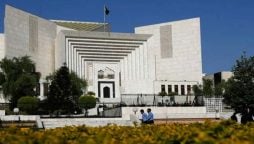PRAC critiques ‘Insufficient’ policy rate cut, seeks action
The Policy Research and Advocacy Council (PRAC) has expressed concerns about the ‘insufficient’ reduction in the policy rate at the State Bank of Pakistan (SBP).
In a statement issued here, the PRAC stated that the SBP’s decision to cut the policy rate by ‘only’ 100 basis points (bps) came at a time when the inflation rate had dropped to a record low of just 0.28% in April 2025, far below the central bank’s target of 5-7%.
“The PRAC had recommended a 200 bps cut considering the current economic conditions, as the private sector is in dire need of cheap credit.”
PRAC Chairman and former Finance Secretary Muhammad Yunus Dagha said that SBP’s ‘cautious’ approach is stifling economic recovery and further restricting credit to the private sector, while it still needs to make major decisions.
“Pakistan’s private sector debt-to-GDP ratio is only 12.0%, one of the lowest levels among developing countries. In contrast, India (50.1%), Turkey (50.3%), and Bangladesh (37.6%) have higher credit availability to the private sector,” the statement added.
“The public sector, including government institutions, accounts for 76.5% of total credit, leaving the private sector with only 23.5% of credit. This ratio was 29% in March 2022 when interest rates were in single digits.”
The PRAC recommended that once inflation is under control, the SBP should cut the policy rate by 200 bps to align it with other countries in the region and promote economic growth.
“When countries like India, China, and Vietnam grow at low interest rates, Pakistan must follow the same path. Not reducing interest rates further is hurting the private sector and slowing the recovery of the economy,” Muhammad Yunus Dagha said.
On May 5, the SBP announced that the Monetary Policy Committee (MPC) had decided to reduce its key policy rate by 100 basis points, bringing it down to 11%.
The Monetary Policy Committee highlighted a sharp decline in inflation during March and April, attributing it to reduced administered electricity prices and a continued downtrend in food inflation. Core inflation also fell to 8.0 percent in April, reflecting a favorable base effect and moderate demand. The committee assessed that the inflation outlook has improved and expects it to stabilize within the target range of 5–7 percent in the coming months.

